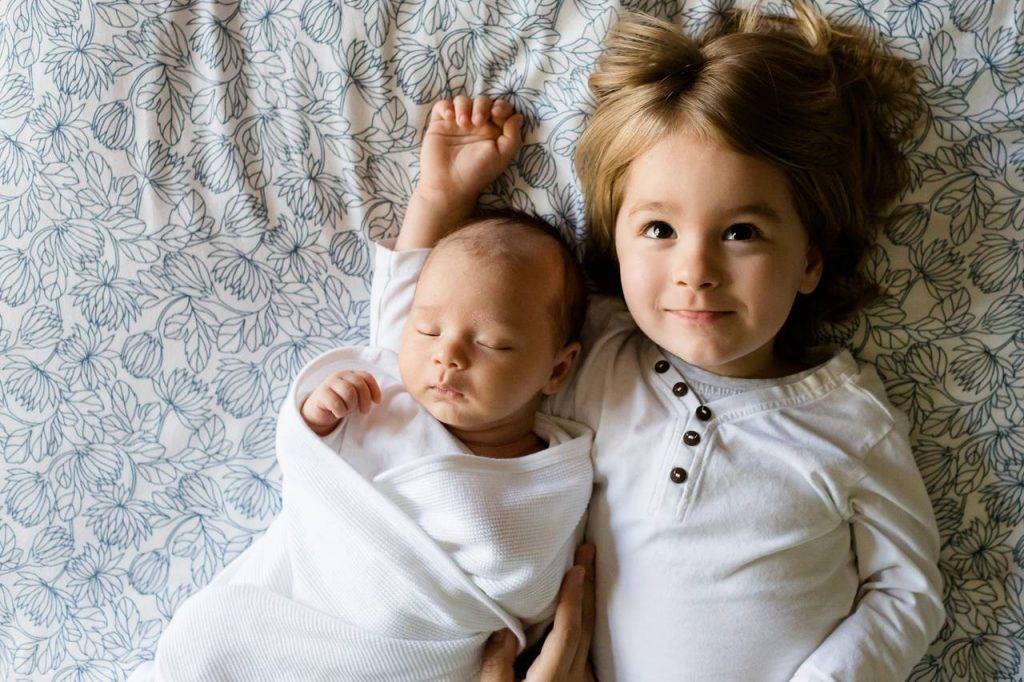Did you know? Newborns can really only see in shades of grey, and only start to fully see color by 5 months of age.
Most people are aware that babies don’t have perfect 20/20 eyesight when they are born. However, as a new parent, you may not know what to expect in terms of when your baby’s vision will improve and when they should undergo an eye exam.
Baby’s first eye exam
Healthy babies with no serious vision problems should have their eyes checked by their pediatrician when they are newborns.
During your child’s regular visits, your pediatrician will most likely check your baby’s eyes again. The purpose of these eye exams is to discover any problems early and limit the risk of vision loss, which can occur if a disorder or abnormality goes misdiagnosed or untreated.
Infant visual development
Birth to 3 months:
A newborn baby is born nearsighted. The baby should be able to see an object or your face from a distance of 8 to 10 inches.
If one eye appears to be constantly turning in or out, an eye exam is necessary.
The eyes begin to operate together during the first few months of life, and eyesight improves quickly. When a newborn starts following moving objects and people with their eyes and reaching for them, eye-hand coordination begins to develop.
By eight weeks, newborns may fix their gaze on the faces of their parents or other people nearby. It is common for an infant’s eyes to not fully be synced – they may appear to wander or be crossed.
By around three months of age, babies should begin to follow moving objects with their gaze and reach for them.
4 to 6 months:
Between 4 and 6 months your baby will use their vision to interact more with the world. For example, they may be fascinated by looking at themselves in a mirror or picking up toys.
Babies’ neck control will improve as well, allowing them to swivel their heads to gaze at objects.
Control of eye movements and eye-body coordination skills continue to grow during these months.
Depth perception, which is absent at birth, will start to develop around the fifth month, when the baby’s two eyes begin to function together as a team to produce a three-dimensional image.
In addition to depth perception, it’s believed that babies have good color vision when they are five months old.
7 to 9 months:
Your child may progress from merely looking at themselves in a mirror to touching the image they see in the mirror.
During this time, your child should make significant progress in depth perception and hand-eye coordination.
Both will come into play around 8 months of age, when babies often start crawling and pulling themselves up.
If your baby’s eyes were lighter in color at birth, you may notice that they darken over the first 6 to 12 months when melanin forms in their iris.
A child’s eye color can change for up to three years, but this is uncommon. By the age of nine months, a baby’s eye color is usually set.
SEE RELATED: Guide to Pediatric Eye Conditions
Schedule an eye exam for your child, with an eye doctor near you.
10 to 12 months:
Your baby is completely engaged in the world around them at this time, thanks to their improved vision and mobility.
By the age of ten months, most newborns have developed fine gripping skills, holding objects with their thumb and forefinger. Babies can also see fast-moving objects during this stage.
Most babies will be crawling and possibly attempting to walk by the age of twelve months.
1 to 2 years:
At a year, your child is still learning about their environment and how to navigate it. Between their first and second birthdays, your toddler is honing their fine motor skills by drawing, and memory recollection by looking at visuals in books or photos.
At this age, children know that when they gaze in the mirror, they are looking at themselves and not another child.
Their depth perception as well as their capacity to focus on both near and far away objects will also increase by this age.
Signs of vision problems in infants
While no parent or caregiver wants to believe that their child has a problem with their vision or eye health, there are several indicators that suggest it’s time to consult an eye doctor.
It is vital for parents to recognize the signs of vision problems as early as possible.
Sign of vision problems include:
- Eye turn
- Poor depth deception
- Difficulty picking up objects
- Closing one eye
- Excessive tearing
- Crusting or red eyelids
- Extreme light sensitivity
- White pupils
How to encourage vision development
Playing with your child is one of the best ways to enhance visual development.
Encouraging babies and infants to interact with the world can go a long way toward helping them develop essential hand-eye coordination and fine motor skills.
When selecting and placing toys near your child, you should keep your baby’s visual abilities in mind. Since newborns can only see within an 8- to 10-inch radius from their face, toys that are age-appropriate should be kept within this range.
Spend time with them, cuddling them, talking with them, and playing with them.
Continue to engage your baby in fun games like patty-cake and peekaboo as they grow and develop their motor skills. You can also play together with blocks or building toys.
LEARN MORE: Children’s Vision
Schedule an eye exam with an eye doctor near you, to make sure your child’s vision is developing properly.
Scheduling routine eye exams for babies and infants is critical for maintaining good eye health and addressing any visual problems as soon as they emerge.


